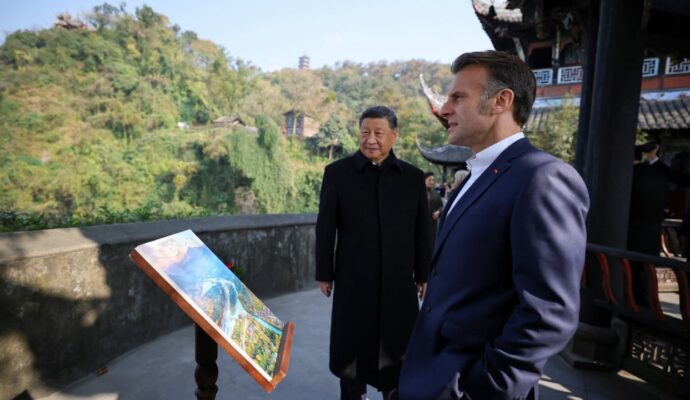Relations between China and Japan have deteriorated in recent years. Just two weeks ago, the Chinese ambassador to Japan warned Tokyo against being “led into the pit of fire” when interfering in Beijing’s dealings with Taipei, prompting a diplomatic protest from Tokyo.
According to interdisciplinary media scholar Sheng Zou, who teaches at Baptist University, Japanese culture is selectively embraced in China and ACG has been received favourably for decades despite downturns in the China-Japan relationship.
“Cultural exchanges between the two countries have never stopped [despite political tensions],” Zou said. “They are initiated and maintained by non-state-affiliated actors, like civil organisations, commercial media and citizens themselves.”
Mai Mizuhashi is known by the stage name MARiA. Photo: Instagram @Maria_grnd
The latest season of Ride the Wind boasts the show’s most ethnically diverse line-up since it was launched in 2020, with Russian singer Katerina Kelly, Korean actress Choo Ja-hyun, Vietnamese multihyphenate Chi Pu, German pianist Gina Alice Redlinger and American singer Annie Lowdermilk featured among the contestants.
“The show provides an occasion for public or cultural diplomacy, which is unofficial, whereas the state is more focused on security, economic and geopolitical issues,” Zou said.
He added that the cultural and political levels of Chinese engagement with Japan were “intertwined but follow different logics”.
Zou said while cybernationalism was prevalent, the Chinese audience was “heterogeneous”, resulting in little overlap between people attracted to Mizuhashi’s art or Japanese subcultures and people who are politically inclined.
Zou said that like many other productions on satellite television, Ride the Wind was mainly a commercial venture, but given that entertainment was an “integral part of soft-power campaigns”, nationalistic sentiment might be a by-product.
“The marketing slogan of the show is ‘the great beautiful China’, which promotes cosmopolitanism with China at the centre,” Zou said. “I call this self-serving cosmopolitanism, because it intends to portray China’s engagement with the world as that of a responsible leader.”
The surprisingly fervent response to Mizuhashi’s performance is also a reflection of China’s obscure community of Japanese ACG fans, according to cultural studies academic Cao Xuenan, who specialises in modern Chinese media, literature and popular culture.
Cao said Mizuhashi’s appearance marked a rare occasion where the anime subculture, as represented by her music and fashion, was showcased on mainstream television. It resonated with China’s otaku – young and middle-aged people immersed in the cyberworld of animation.
“There is a sizeable yet invisible audience of Chinese otakus that don’t usually see the type of images that they like on television,” Cao said.
“Mizuhashi’s explosive popularity reflects that they have been hoping for this type of moment, many of whom are stuck with medium or low-paying jobs, have a dismissive attitude towards life but want an outlet.”
The celebrity contestants deliberately promoted by Ride the Wind fit a specific portrayal of women – empowered, independent and possessing a forceful persona, but that fails to serve a portion of the audience looking for an “alternative female image” such as Mizuhashi, according to Cao, who is an assistant professor at the Chinese University of Hong Kong.


